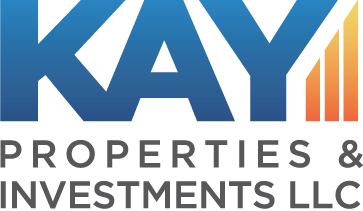So you’ve decided to do a 1031 exchange, meaning you have decided to sell your property and invest that money in another property in order to defer the federal capital gains tax, state capital gains tax, depreciation recapture tax and the Medicare surtax. Smart!
divBut are you just moving from one headache to another? If you’re looking to retire from property management but you still want to defer your taxes using a 1031 exchange and keep your invested money working for you, you might be interested in learning about a DST.
DST 1031 Exchange: What is it and How Might it Help with my Current 1031 Exchange
DST stands for Delaware Statutory Trust. Here’s the full technical definition: a separate legal entity established under a trust created for the purpose of holding, managing, administering, investing, or operating a property, or for allowing business/professional properties to have multiple trustees where each owner has beneficial interest for federal tax income purposes and every owner gets an undivided fractional interest in the DST property. These properties are not limited to the state of Delaware, but the idea of a DST was created under Delaware law.
Let us decode that for you. A DST allows each investor to own a fractional interest in a property with other investors, not as limited partners, but as his or her own individual owner inside the trust. Everyone will receive his or her own percentage share of the potential income, tax benefits, and potential appreciation of the whole property. Each owner is treated as owning an undivided fractional interest.
This structure of ownership allows the minimum investment to often be as low as $100,000, allowing investors to not only be able to invest in properties that can be too expensive to purchase individually (like large multifamily apartment communities, office buildings, industrial properties, single tenant net lease retail, self-storage facilities, and medical offices), but to invest their money into multiple properties, diversifying* their real estate portfolios with properties that are professionally managed.
So if you invest in a DST as your replacement property during a 1031 exchange, you can be a passive investor (no more calls about the toilet clogging or cockroach infestations) and diversify your real estate portfolio by being able to put the money from your sold property into multiple properties. Not only will you be free from management responsibilities, you can have a fractional ownership interest in multiple properties (for example instead of buying one apartment building or one single tenant net lease building you are now able to own an interest in thousands of apartment units throughout the country and an interest in a multi property portfolio of single tenant net lease buildings), letting your investment work for you while you take a step back and enjoy your newly found free time.
If you are trying to do a 1031 exchange, you might also be in a “time crunch” due to the 45-day identification period. If you decide to invest in a DST property for your exchange, you can close on your DST replacement properties typically between three to five business days of completing and returning the subscription documents. DST property investments are able to close quickly, due to the properties being pre-packaged and ready-to-go, saving investors from missing the deadline to defer the capital gains tax.
In order to effectuate a 1031 exchange, you need a Qualified Intermediary (also known as QI) to facilitate the exchange. A QI is an independent third party who will hold the proceeds and will be a part of enacting the 1031 exchange through purchasing the replacement property. That’s where Kay Properties comes in. We provide DST properties that have passed our due diligence program and connect you with the properties that make sense for each investor’s situation. We work with our clients to extensively review different DST sponsor companies, DST investments, real estate asset classes, locations, the use of debt vs. all-cash/debt-free real estate, etc. For more details on 1031 exchanges, DSTs and the Kay Properties process, please register at www.kpi1031.com or contact your Kay Properties representative.
There are a number of potential benefits of exchanging into a DST property, but it is important to note that these should be carefully weighed with the potential risks outlined below. You should also read in detail the risk section in the offering materials of each DST 1031 property prior to investing for a full understanding of each DST investments business plan and risk factors.
*Diversification does not guarantee profits or protect against losses.
